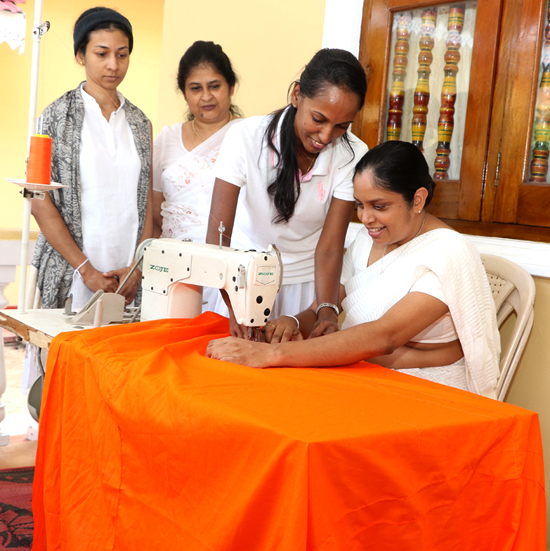Katina Pinkama or offering of robes to Bhikkhus takes place on Vap Pasalosvaka Poya in temples throughout Sri Lanka. Religious ceremonies mark the conclusion of the Vas period for the Bhikkhus.
This notable religious ceremony called Katina Pinkama, as usual, takes place in the early hours of Vap Poya. Before sunrise, the devotees make their way in Perahera to the temple where Bhikkhus have spent three months confining themselves till the end of the Vas or rainy season that begins after Esala Poya.
It was the practice during the time of the Buddha for his followers who had given up their lay life to sojourn with the idea of propagating the Buddha Dhamma. This practice continued even during the rainy season.
The Buddha once saw his followers walking in the rain with their robes wet and advised them to confine themselves to Aramas or temples. The rainy season Vassana or Vas evolved into an elaborate religious ceremony over the years. In Sri Lanka, with the introduction of Buddhism in the third century BC Bhikkhus spent their time in temples during the Vas period when they received the special attention of the lay people.
Bhikkhus are expected to discuss matters relating to their faith with lay people who visit temples. The requirements of the Sangha are met after inquiring into their needs.
On the day of Vap Poya, Katina Pinkama is held in which robes are offered to the Sangha in a ceremony to accrue merit.
Vas period of the Buddha
Special attention is paid to Bhikkhus who observed the Vas period in keeping with the practices performed from the time of the Buddha.
There are other incidents connected with the life of the Buddha. The first sermon based on Abhidhamma was delivered by the Buddha to the devas (deities) in Tusita heaven before returning to the city of Sankassa in India was called in ancient times.
Thus began the visit of the Buddha in propagating his doctrine. The first sermon by him was delivered to his five disciples who became his followers after they were convinced about the true nature of things in life.
With the first Vas period of the Buddha, the 61 people who became followers of the Buddha renounced all their worldly things in preference to lead the life of recluse mendicants.
Another notable event that happened in Sri Lanka on Vap Poya was the sending of emissaries by King Devanampiyatissa to Emperor Asoka of Dambadiva asking him to send a Bo sapling of Sri Mahabodhi in Bodh Gaya.
It was brought by Theri Sanghamitta within a period of six months after the arrival of Arahant Mahinda during the time King Devanampiyatissa who ruled the country from Anuradhapura.
The Council of Bhikkhus met to rectify the Vinaya rules meant for the Bhikkhus. This was done in case any abbreviations were found in the Vinaya rules written in books and corrected.
Centre of religious observance
The Vap Full Moon Poya is important on account of the Katina Pinkama when the ceremony of the offering of the new robe is held as an important event of the year.
For the ceremony, a white cloth is cut in the form of ridges of paddy fields, sewn, dyed and dried and then made into a robe. The robe is taken round in the early hours of the day (before daybreak) in a procession to the temple.
The temple becomes the centre of religious observance. During the night Bhikkhus chant pirith and after offering gilanpasa, heel dana, dana, the night after Vap Poya, bana preaching follows. It is then that Katina robes are offered to one Bhikkhu on behalf of the Sangha.
The Bhikkhus who had received Upasampada (higher ordination) are entitled to observe vas. The practice is only one Katina Pinkama can be held in a temple even if there are many Bhikkhus who had observed vas.
Mahavagga describes how Katina Pinkamas and observing vas began. The first vas period was observed by the Buddha and his five disciples at Isipathanarama, setting an example for others to follow.
It is seen from these ceremonies that lay people take a keen interest in the welfare of the Sangha providing them with the necessary material required. On the day of Katina Pinkama, a branch of a mango or jak tree is placed in the premises of the Bana Maduwa where offerings are hung as offering to the Sangha. It is called the Kap Ruka, wish-conferring tree.



Add new comment